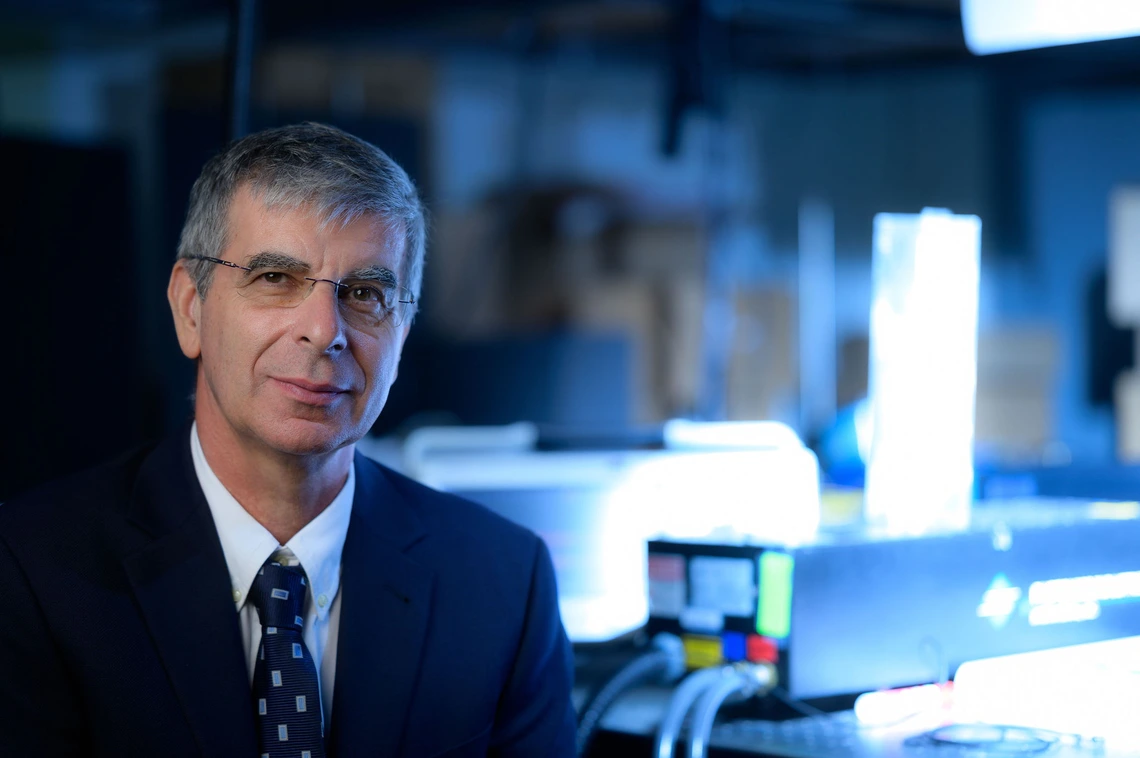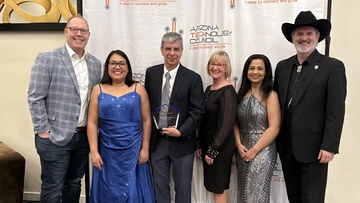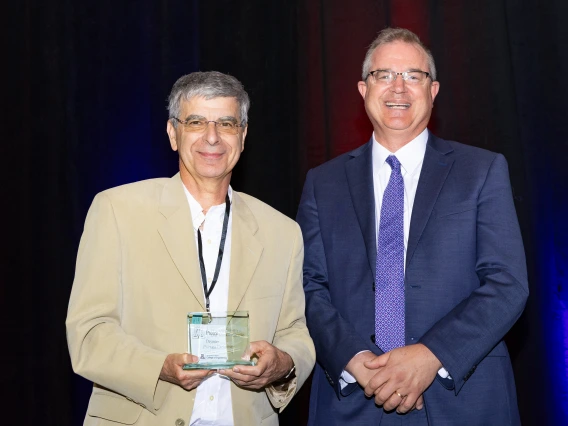Sounds like success, U of A NSF center wins Innovator of the Year Award
The Arizona Technology Council and Arizona Commerce Authority name the New Frontiers of Sound Science and Technology Center Innovator of the Year at the Governor’s Celebration of Innovation.

Materials science and engineering professor Pierre Deymier directs the New Frontiers of Sound Science and Technology Center, winner of the 2025 Governor's Innovator of the Year Award in the academia category.
The University of Arizona’s New Frontiers of Sound Science and Technology Center (NewFoS) research team won the Governor’s “Innovator of the Year – Academia” award. The Arizona Technology Council and the Arizona Commerce Authority bestowed the honor at their annual event, the Governor’s Celebration of Innovation, held on Nov. 12.
NewFoS is led by director Pierre A. Deymier, a professor in the Department of Materials Science and Engineering at the U of A College of Engineering. He is a leading researcher in phononics – a field at the intersection of physics and materials science that explores how sound waves move through materials.

(From left) Derick Maggard, Araceli Hernández-Granados, NewFoS Director Pierre Deymier, Lynn Frazier, Rakhi Gibbons and Doug Hockstad.
Deymier – a faculty member of the BIO5 Institute and the applied mathematics graduate interdisciplinary program – accepted the award with team members Araceli Hernández-Granados, knowledge transfer research scientist, and Lynn Frazier, research manager.
“This award recognizes the hard work and commitment to innovation of all NewFoS students, staff and faculty,” Deymier said.
The National Science Foundation granted the U of A $30 million to establish the center in 2023. NewFoS accelerates research on topological acoustics. Topological acoustics maps sound waves to an abstract multidimensional space to examine their geometry. By examining sound in this way, scientists can see and manipulate attributes of sound waves that aren't visible in traditional acoustics.
Applications for topological acoustics include communications and computing, environmental sensing and monitoring, and noise reduction.



